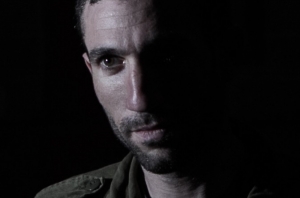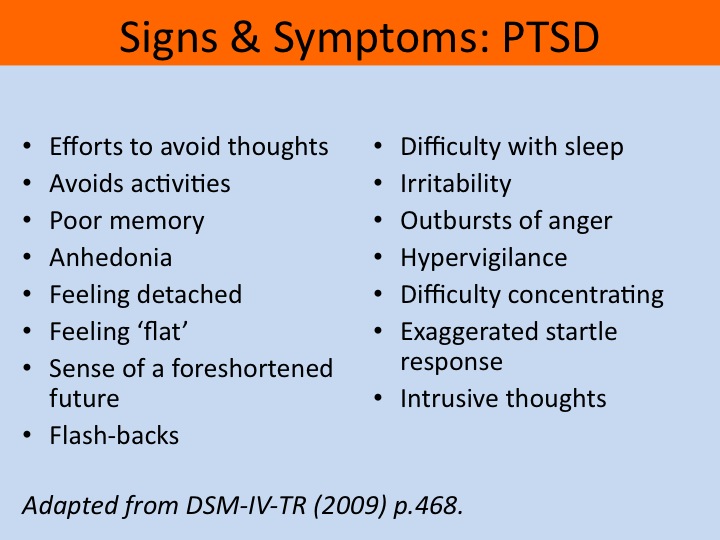
PTSD & Parkinson’s Disease: Longer Version
How cortisol can affect the hippocampus, amyglada,damage neurons, synapses and dendrites, etc. The link between emotional trauma and Parkinson’s.
There are an estimated 308,402 veterans currently being treated for PTSD in the United States.
Source: BrainMind.com PTSD & Parkinson’s Disease: Hallucinations, Memory, Flashbacks, Amygdala, Hippocampus, Hypothalamus, Stress, by Rhawn Joseph, Ph.D.
The startling parallels between PTSD and Parkinson’s Disease. There are an estimated 308,402 veterans currently being treated for PTSD in the United States.
11 Facts About the Mental Health of Our Troops
Source: DoSomething.org
- Depression and Post-traumatic Stress Disorder (an anxiety disorder that follows experiencing a traumatic event) are the most common mental health problems faced by returning troops.
- PTSD symptoms can include recurring nightmares about traumatic events, hesitation to discuss the traumatic events, or difficulty sleeping or performing normal tasks.
- Post-traumatic stress disorder is diagnosed after several weeks of continued symptoms.
- Psychiatrists project that 1 in 3 U.S. soldiers will suffer from PTSD after serving in Iraq or Afghanistan (or both). The rate for PTSD is two times higher for those men and women who served two tours, which makes up approximately 40 percent of all U.S. troops.
- Between 2002 and 2012, 1.6 million service men and women left active duty and became eligible for veteran health care. Only 56 percent of all veterans sought treatment by the end of 2012.
- 30 percent of soldiers develop mental problems within 3 to 4 months of being home.
- 55 percent of women and 38 percent of men report being victim to sexual harassment while serving in the military.
- Because there are more men than women in the military, more than half of all Veterans experiencing military sexual trauma (MST) are men.
- An estimated 20 percent of returning Iraq and Afghanistan veterans turn to heavy drinking or drugs once they return to the U.S.
- Between 10 and 20 percent of Iraq and Afghanistan veterans have suffered a traumatic brain injury (TBI). Possible consequences of this internal injury include anger, suicidal thoughts, and changes in personality.
- In 2010, an average of 22 veterans committed suicide every day. The group with the highest number of suicides was men ages 50-59.
- Medical help should be sought immediately if any of the following symptoms are recognized in a veteran: unusual behavior including drug or alcohol abuse, hopelessness, uncontrolled rage, dramatic mood changes, drastic sleep patterns, or threatened or attempted self-harm.
Show your support for our veterans by writing a letter. GO
Sources: IVN, PTSD, FAS, Department of Veterans Affairs, Iraq and Afghanistan Veterans of America
PTSD Treatments- EMDR and More
PTSD in women may have genetic link
“Eye Movement Desensitization and Reprocessing (EMDR) is an integrative psychotherapy approach that has been extensively researched and proven effective for the treatment of trauma. EMDR is a set of standardized protocols that incorporates elements from many different treatment approaches. To date, EMDR therapy has helped millions of people of all ages relieve many types of psychological stress. Below is a Brief Description of EMDR Therapy….” More here…
Available in Spanish: Tratamiento del TEPT | Ver todos
- Understanding PTSD Treatment Handout (PDF) Veteran’s Administration
Approaches Other Than EMDR
Other approaches have also proven effective. One professional notes that research suggests EMDR is related to reconditioning and adopts a behavioral relaxation approach combined with trauma processing/desensitization.
Shell Shock
PTSD in World War I. In the fight or flight response the adrenal glands secrete cortisol, also called the “stress hormone.” High levels have been associated with damage to the amygdala and other areas of the brain. Here we see trauma’s impact on the nervous system after sustained cortisol levels in veterans and the possible link between epigenetic inheritance of Parkinson’s Disease as explained in the top video with Rhawn Joseph.



